Seattle gets a little more ambitious as it updates its growth plan
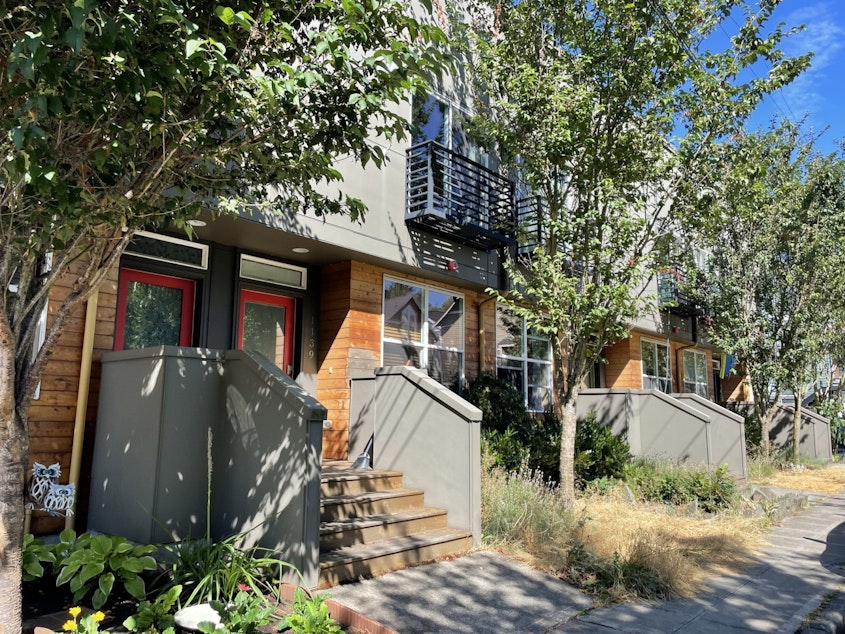
It’s been eight years since Seattle updated its comprehensive plan. That’s the document that says where the city will allow new homes.
In that time, we’ve seen a dramatic population growth, a pandemic, downtown got knocked off its feet, we had protests against racial inequity, and there’s a climate crisis.
All of those things are changing how the city thinks about growth going forward.
Every 10 years (it used to be every eight), cities across Washington are required by state law to update their comprehensive plans. Updated plans must be published by the end of 2024.
This week, Seattle's process of updating its plan reached a milestone, when it laid out exactly how big it's willing to dream (more on those details later).
First, a little context.
Comprehensive plans may sound like the esoteric musings of technocrats, but they're important, as they will help determine whether cities like Seattle become more exclusive and expensive than San Francisco.
Seattle's already on track to have more people than San Francisco by 2030 or 2035, according to Josh Brown, who leads the Puget Sound Regional Council. By 2050, Seattle will hit a population of one million. Brown says that, like San Francisco, Seattle's ability to spread out is constrained by geography (and in our region, a decision to preserve forests and farms) and so it must build up.
Sponsored
There are many reason the cost of new homes in the greater Seattle metro area have risen 48% since the start of the pandemic. One of the most imporant variables in that equation is how many homes get built, relative to the number of jobs added. Home developers have really picked up the pace in recent years, but in the long term, the region has added jobs much faster than it has added homes.
Seattle's current (and soon to be obsolete) comprehensive plan directs most of the city's growth to hotspots known as "urban villages." This has resulted in lots of small apartments, but very few three-bedroom homes that families can buy. Another result of this approach has been that lower density parts of the city are preserved in amber, although in recent years the legalization of small mother-in-law-apartments and backyard cottages has slightly increased the density there.
Still, the old plan is especially obsolete because the city has grown twice as fast as that plan projected, Seattle's long range planner Michael Hubner says.
A comprehensive plan update is where the city can course correct and set a new path. The city's new goal is to build a minimum of 80,000 new homes by the year 2044, or up to 120,000 new homes if elected leaders want to make the city accessible to people with a wider range of incomes.
This plan is not fully baked yet
Earlier this summer, during the "scoping phase," the city laid out which new ideas it's planning to study for potential inclusion in the new comprehensive plan. At KUOW, we described the different growth strategies as different kinds of cookies.
Right now, the new comprehensive plan is kind of like cookie being baked in an oven. Early in the baking, the city asked for feedback on what should be in the cookies. That’s like the baker opening the oven door and allowing people to spread shredded coconut on top, or raspberry glaze, or whatever topping they liked.
This week, it's kind of like the the cook closed the oven door and said, "That's it, no more toppings."
Sponsored
Enough with the cookies. Back to the growth plan.
The feedback for the comprehensive plan's scope came in the form of around 1,000 comments, most of those comments asking the city to think bigger, to allow for more kinds of housing in more places.
More housing would let Seattle not only meet future projected demand, but also cut down on the unmet demand that has helped drive prices so high and driven many people out of the city – especially Black, Indigenous and People of Color .
Several comments also called for better tree protections. A minority of commenters asked for less growth.
The city released its response all those comments Monday. In that response, we learned which cookies (strategies) will soon come out of the oven for us to poke at and taste. We learned how imaginative city officials are willing to be when it comes to future growth.
Sponsored
Here are a few changes since the city first floated its five strategies:
- An idea to create tiny urban villages that will hereafter be called "neighborhood anchors" has become more specific. You know how, in Seattle, there are little pockets of restaurants and businesses nestled in residential areas? Many of these nodes grew up around streetcar lines no longer in service. Under the "neighborhood anchors" option, those areas would be opened up to apartment buildings five to seven stories tall within a three to four block area. For example, the planned light rail station entrances at 135th Street and 145th Street would become neighborhood anchors. West Seattle / Delridge would get eight new neighborhood anchors, and density would be a little greater in north Seattle, where there's a statistically lower risk of pushing people on limited incomes out. This idea is being sold as the most in line with the City Council's interest in "15 minute neighborhoods," where it would be easy to walk to a corner store to fetch milk rather than driving to the nearest grocery store.
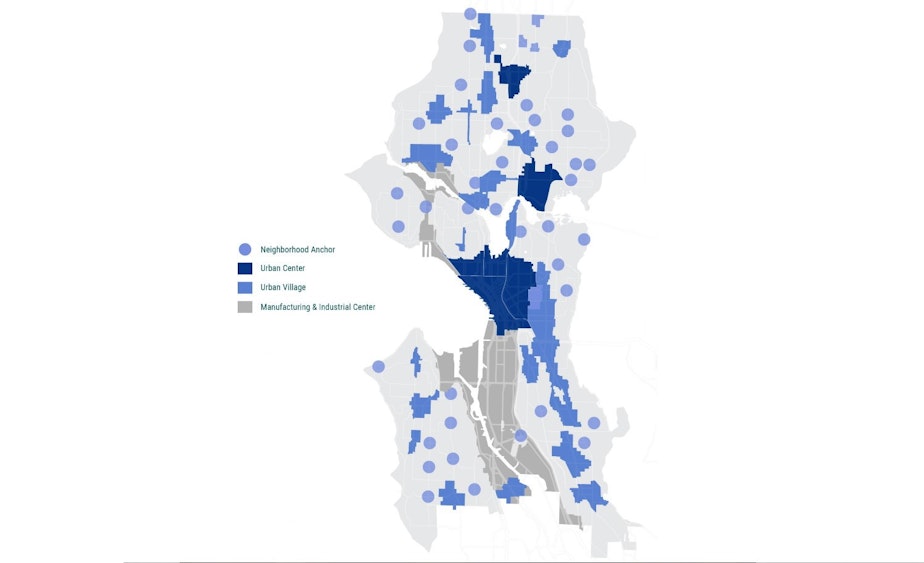
- A strategy to add more density in areas dominated by single-family homes (sometimes with mother-in-law-apartments or backyard cottages) got a little more aggressive, too. In addition to allowing townhomes everywhere, the city's also considering allowing six-plexes: three stacked floors with two units on each, which could be apartments or condos. This change, if adopted, could have significant impact on homeownership opportunities for growing families.
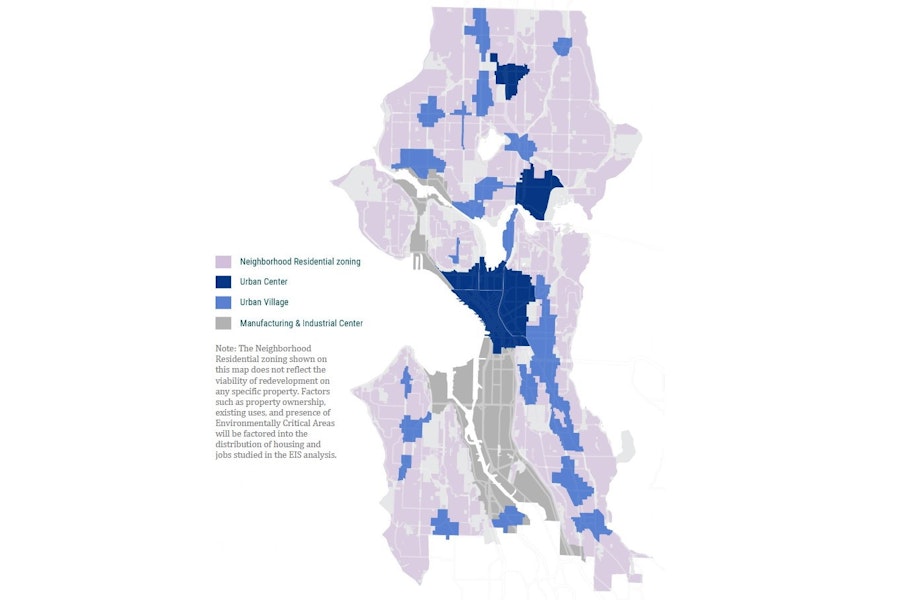
Sponsored
- An idea to increase the density along transit corridors has grown a little more robust. Now, they'll allow five-story buildings along corridors. And the city had redefined "corridors" as anything within a five-minute walk of frequent transit. This means that growth could happen not just on busy streets, but also on the next block or two, which are quieter. Also, land near entrances to major parks will be opened up to this kind of density to improve access to parks for people who can't afford single-family homes.
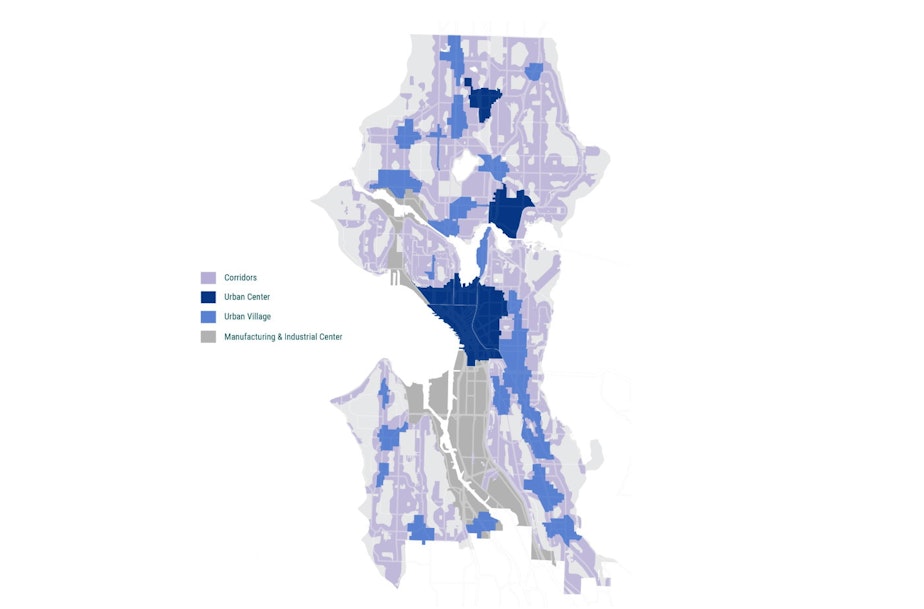
- An option to pursue "all of the strategies above" (neighborhood anchors, denser corridors and broad density everywhere) added some juicy details. The most eye-catching of these is the prospect of high-rises in Ballard. To be clear, the city's not studying high-rises in Ballard yet, but this option would designate Ballard as an "Urban Center," like the University District, which opens the door to a later up-zone that could allow high-rises. This might sound like a big shift, but the neighborhood is set to be the terminus of a planned light rail line that may open before the end of this comprehensive plan's planning period in 2044. This option would also increase density around the 135th Street station to an Urban Village and expand footprints for many Urban Villages (not Ballard, as it already expanded recently).
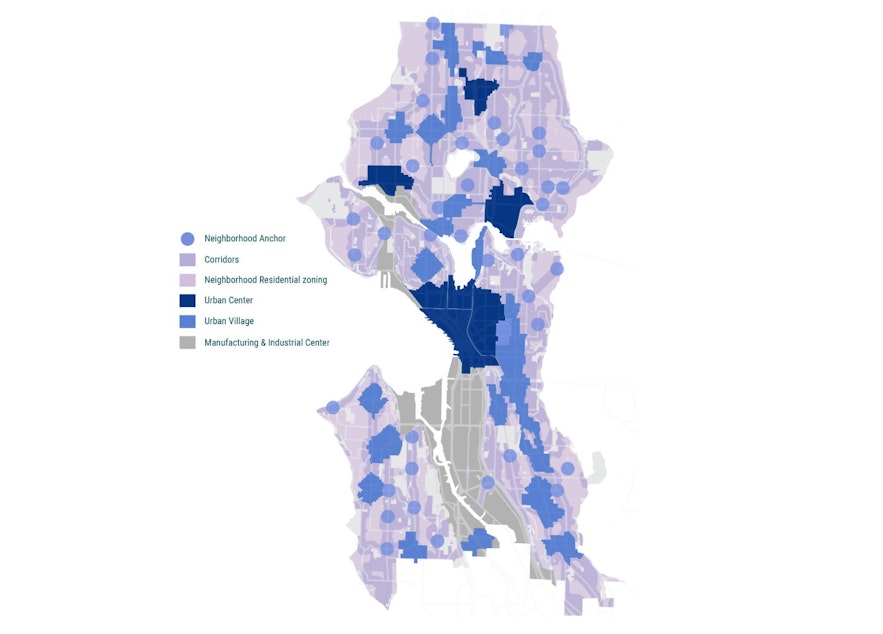
- The city's also looking at requiring new trees at all new developments, increasing protections for large trees, and requiring developers to mitigate the loss of tree canopy when an older tree is taken down. The city's also considering proactively cataloguing historic properties, perhaps to anticipate bumps in the development pipeline when a building or neighborhood's historic status could stall development, as it did with the Showbox downtown.
- Some of the most potentially significant changes were mentioned in Monday's report but will require much more fleshing out. For example, city officials recognize the huge problem of displacement of minority communities. To that end, it's studying ways of bringing new development models to south Seattle that could help stabilize communities currently being torn apart by new, relatively expensive, development that existing residents cannot afford.
All of these ideas on the table are just ideas, for now. Not everyone’s happy either: On Tuesday, many density advocates are expressing distress on social media that the city did not offer a more aggressive option.
On the other side, some will feel the city is going too far. However, the city will also study an option that maintains the status quo, continuing to house newcomers mostly in apartment blocks in existing urban villages.
The city will study all these ideas, so that the mayor and city council may choose their favorite strategies and decide how aggressive they want their housing goal to be. Those choices must be published in a new comprehensive plan update by the end of 2024.



